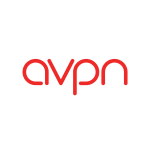View Infographic Summary
Challenge
Funders and resource providers are often working in silos and unable to find a strong pipeline of investment-ready opportunities. At the same time, social enterprises are seeking help but are unsure about how and where to find support. To unlock Asia’s $40 trillion in private wealth for long-term, sustainable impact, resources are needed to help social enterprises and investors identify and match needs and resources as well as speak a common language of returns and social impact.
Solution
A Social Enterprise (SE) Development Toolkit to map SEs’ capital needs and help funders provide more relevant and timely resources.
Swinging between passion and the mire
When Jared King first launched Good Financial in June 2018, they had 5,000 applicants almost immediately. His social enterprise (SE) is not only delivering solutions to migrant workers that traditional financial institutions or illegal money lenders are unable to provide, but it is also encouraging migrant workers to set aside savings. By reimagining the way financial services can be provided for all, it is no wonder Good Financial has become the buzz in town.
With an incredible demand for loans and a small team of seven, Jared soon found himself falling all-too-easily into the mire of day-to-day tasks. “We have raised hundreds of thousands through friends and families, but we need millions more to scale our impact”, says the founder. “Taking a step back to ensure that the fundamentals of my business are sound has never been more important”.
Saying ‘no’ to funding wastes
On the other side of Hong Kong, Liza Green, has also seen a major transformation in the wealth management bank, Credit Suisse. When India passed its CSR law in 2013, Liza – the Head of Corporate Citizenship in APAC – and her team had to embark on a steep learning curve to ensure their corporate giving was effective. On the way, she found out that numerous capital providers were working in silos, not sharing information about who they were financing, duplicating efforts, and resulting in funding wastes. This led Credit Suisse to cofound collective impact initiatives to facilitate co-funding in Malaysia and HK and partner with AVPN to co-launch the Funding Education with Impact, India’s landscape study to identify gap areas in the field. This study ultimately led them to meet and start funding AVPN Deal Share listed Muktangan – an Indian non-profit that trains teachers to provide English-medium schooling for underprivileged children.
More recently Credit Suisse has refined their giving strategy by building capacity in emerging areas including Future Skills, Financial Education and Financial Inclusion. Now incorporating SEs within their broad beneficiary pool, Liza explains, “It has become clear to me that leveraging our philanthropic dollars to bring social enterprises (SEs) along the continuum so that they are ready for long-term investments is a necessary ingredient to scale their impact. Even if our own impact funds do not invest in them, it is our hope that others will. And, it is our responsibility that these SEs are ready.”
The key to sustainable social entrepreneurship growth in Asia
There are, however, challenges when it comes to executing capacity building efforts for social entrepreneurs. A long and expensive process, these initiatives are not typically maximised as it is difficult to find out where the SEs’ skill gaps are and tap into their already stretched time and resources. The greatest challenge yet is not just the lack of resources or pipeline of investible opportunities; the greatest challenge is identifying a common language across a multitude of voices – from funders to resource providers to social enterprises – so that everyone can articulate their needs and resources on an equal playing field.
AVPN then became Liza’s go-to platform to gain guidance, refine ideas, and formulate a special pilot project together – a SE Development Toolkit. The online wizard will help SEs profile themselves based on their stage of development using Village Capital’s Venture Investment Readiness and Awareness Level (VIRAL) matrix. In profiling themselves against VIRAL, SEs can better identify their needs and be matched to a set of available resources. Likewise, capital providers can provide more relevant support to SEs who are at different growth stages. This framework helps various players to see the bigger picture and think more strategically about what is most valuable to the ecosystem.
More than just a toolkit
The opportunity to participate in the making of the Toolkit came at an opportune time for Jared. In a series of webinars and engagement modules led by AVPN members, Jared was learning how to do less to achieve more by focusing on ‘the right things’. It was not just the realisation that he could now turn ideas into action or more easily apply for grants, obtain pro bono legal services or articulate a sound finance management to investors; he had gained a community. “AVPN and Credit Suisse have embraced us by bringing us into a community that strives to build trust,” remarks Jared. “The conditions for success are already in place: 110% passion and the community built by AVPN and Credit Suisse.”
Indeed, the community is the key reason in shaping the SE Development Toolkit into a vibrant and dynamic tool that is sparking the interests of fellow AVPN members. “AVPN is not just a platform that makes connections and offers insights,” says Liza, as she reflects on her journey with AVPN. The whirlpool of members and social investors in the wider network has brought forth enthusiastic partners who are willing to provide their expertise and contribute to the Toolkit of resources. Partnering with Village Capital to share their VIRAL matrix and adapt it to a more localized, Asian context for social investment was a first step.
The Swisscontact-implemented and USAID-funded RISE project – Regional Investment Support for Entrepreneurs – is another example. Swisscontact turns 60 this year and has been promoting enterprise development in various ways throughout its history. One of the challenges Swisscontact addresses through RISE is that of investment readiness. Kevin Robbins, the RISE Team Leader and Deputy Country Director for Swisscontact Cambodia, has seen that tailored support for SEs is crucial. “Most entrepreneurs realize that they need help,” he says, “as they clearly see that the company’s ever-evolving needs outstrip the time and capacity of their core team. But where can they source high quality support, how can they pay for it, and what do they prioritize– these are tough and important questions.” There’s no “one size fits all” solution for these entrepreneurs, so the trick is securing the right support at the right time.
When Kevin found out about the SE Development Toolkit that AVPN and Credit Suisse were piloting, he was excited. “AVPN is leading the way in developing a digital platform where various ecosystem players can connect and collaborate. We wanted to find a way that RISE could support this platform and provide new services for both SEs and investors.” Currently RISE is supporting two SEs who have used the toolkit for self-assessment. By matchmaking these SEs with vetted experts, RISE delivers demand-driven support in areas such as supply chain development, fundraising, and impact measurement. RISE and AVPN are now testing the model with an eye to refine and expand through AVPN’s digital platform in the future.
Join the movement
The Toolkit is just the start of our journey in helping Social Purpose Organisations thrive. What makes the Toolkit unique, though, is its ability to break down boundaries between supply and demand. We are honoured that it has been featured in the World Economic Forum’s list of global Lighthouse projects, and it is a testament of the diversity the AVPN platform brings tco identify angles, gaps, and foster unique partnerships that are otherwise unimaginable.
Hear from our partners and social enterprises to find out how they have benefited from it


















